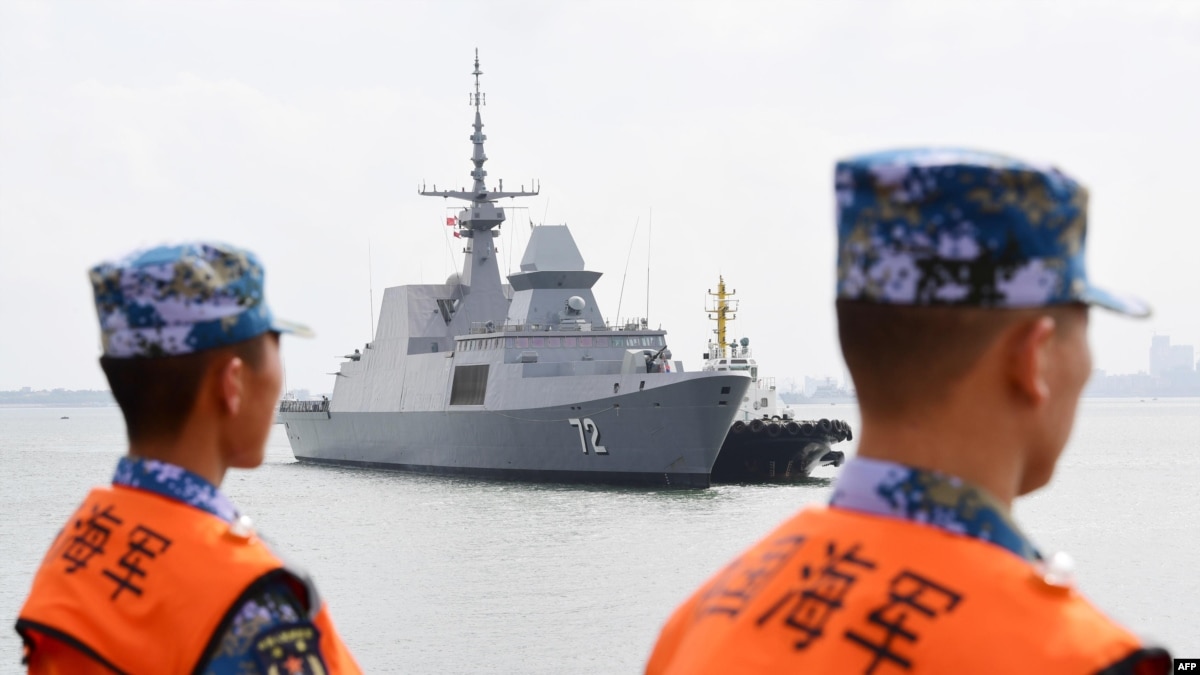
As China moves to complete the creation of military outposts in the South China Sea, Beijing’s negotiation with southeastern Asian nations over a binding code of conduct is gaining momentum.
But U.S. officials and experts warn China’s insertions in the draft South China Sea code of conduct may put Washington and Beijing on a collision course. The text of the draft also shows that deep divisions remain among claimants.
One of the Chinese provisions in the text states, “The Parties shall not hold joint military exercises with countries from outside the region, unless the parties concerned are notified beforehand and express no objection.”
China also proposed cooperation on the marine economy “shall not be conducted in cooperation with companies from countries outside the region.”
A State Department spokesperson told VOA the United States is concerned by reports China has been pressing members of the Association of Southeast Asian Nations “in the closed-door talks, to accept restrictions on their ability to conduct exercises with security partners, and to agree not to conduct oil and gas exploration in their claimed waters with energy firms based in countries which are not part of the ongoing negotiations.”
“These proposals, if accepted, would limit the ability of ASEAN nations to conduct sovereign, independent foreign and economic policies and would directly harm the interests of the broader international community,” added the State Department spokesperson.
Competing for influence
For China, the benefits are apparent. The United States and China are competing for influence in the Indo-Pacific region.
China and Southeast Asian navies are heading to their first joint exercises from October 22 to 28. An inaugural ASEAN-U.S. maritime exercise will be held next year.
“In other words, China would like a veto over all the military exercises held by ASEAN countries with other nations. I think this really provides some evidence that China indeed is trying to limit American influence in the region, one might go so far as to say to push American military presence out of the region eventually, but certainly in the area of the South China Sea,” said Bonnie Glaser, director of the China Power Project at the Center for Strategic and International Studies in Washington.
While the United States is not a claimant to the sovereignty of disputed islands in the South China Sea, Washington has said China's efforts to militarize outposts in the contested waters endanger the free flow of trade and undermine regional stability, a claim Beijing rebuts.
The United States is also calling for ongoing discussions on the South China Sea code of conduct to be transparent and consultative with the rest of the international community. U.S. officials said the international community has direct stakes in the outcome.
Code of conduct draft
In August, Singapore's Foreign Minister Vivian Balakrishnan announced China and ASEAN’s 10 member countries had reached a draft agreement. (Single Draft South China Sea Code of Conduct Negotiating Text or SDNT). ASEAN leaders are to meet next month in Singapore.
Highlighting the importance of such a draft, a Center for Strategic and International Studies report said for the first time in many years, an effective diplomatic process to manage South China Sea disputes seems possible.
ASEAN and China have been discussing a potential code of conduct (COC) to manage the South China Sea maritime and territorial disputes for more than two decades.
Leaked details of the draft state the code of conduct is “not an instrument to settle territorial disputes or maritime delimitation issues.”
Managing disputes
The draft shows deep divisions among South China Sea claimants over many issues, according to experts, especially over the most sensitive issues like the agreement’s geographic scope, potential dispute settlement mechanisms, and details of resource exploration.
“What the code of conduct is intended to do is to manage the disputes to prevent them from escalating, and basically to allow the freezing of the thorny territorial questions, while states can manage the resources and manage tensions in the near to medium term,” said Gregory Poling, director of the Asia Maritime Transparency Initiative” at Center for Strategic and International Studies (CSIS).
In August a trilateral statement from Japan, Australia and the United States called for the Code of Conduct “to not prejudice the interests of third parties or the rights of all states under international law; to reinforce existing regional architecture; and to strengthen parties’ commitments to cease actions that would complicate or escalate disputes.”
Former Deputy Assistant Secretary of Defense for South and Southeast Asia Amy Searight said Washington’s “concrete position” on no prejudice against third parties “is to really criticize China's attempt to marginalize U.S. influences” in the region.
Read More South China Sea Code of Conduct Gains Momentum as China Moves to Complete Militarization : https://ift.tt/2z409u3
No comments:
Post a Comment